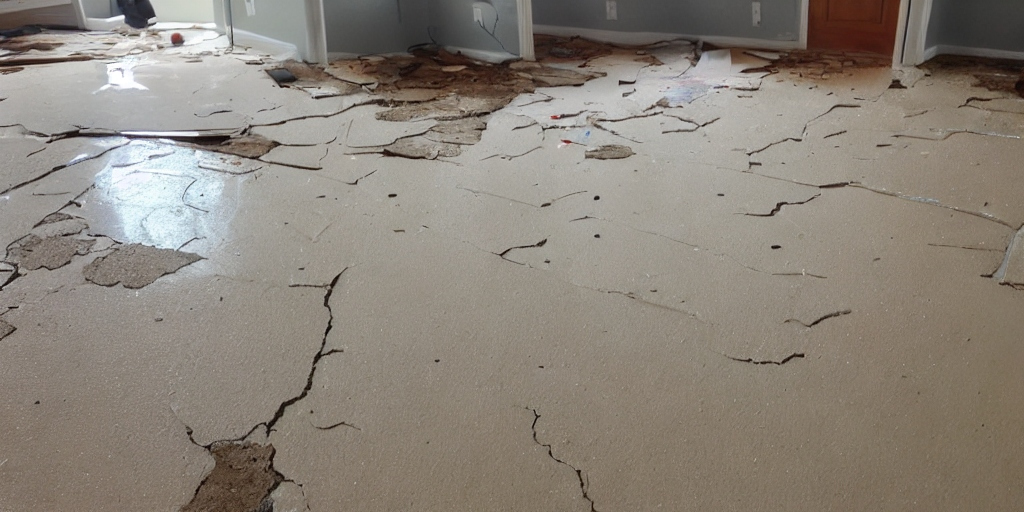Water damage to subfloors can wreak havoc on homes, leading to structural issues and costly repairs if not addressed promptly. Whether it’s a slow leak from a faulty appliance or a sudden burst pipe, dealing with water damaged subfloors requires careful attention and expertise. In this guide, we’ll delve into the process of repairing water damaged subfloors, addressing common questions, and providing practical advice for homeowners.
Understanding Water Damage
Water damage to subfloors often goes unnoticed until visible signs appear, such as sagging floors or musty odors. However, by then, the damage may be extensive. It’s essential for homeowners to be vigilant and proactive in identifying water damage early on to prevent further deterioration.
Signs of Water Damage
Signs of water damage to subfloors include:
- Sagging Floors: Subfloors weakened by water damage may sag or feel spongy when walked upon.
- Visible Stains: Water stains on flooring materials or walls indicate water intrusion.
- Musty Odors: Mold and mildew growth due to moisture buildup can cause unpleasant odors.
- Warped or Buckling Flooring: Excess moisture can cause flooring materials to warp or buckle.
If homeowners notice any of these signs, it’s crucial to investigate further and address the underlying issue promptly.
Also Read: Water Damage Restoration Tampa: Restoring Homes and Businesses in Central Florida
Assessing the Damage
Before proceeding with repairs, a thorough assessment of the damage is necessary. This involves:
- Inspecting Subfloor Condition: Remove flooring materials to expose the subfloor and assess its condition. Pay attention to areas where water may have accumulated, such as around appliances or plumbing fixtures.
- Testing Moisture Levels: Use moisture meters to measure the moisture content of the subfloor and surrounding materials. Elevated moisture levels indicate ongoing water damage.
- Identifying Structural Issues: Check for any structural damage to floor joists or support beams caused by water infiltration.
Based on the assessment findings, homeowners can determine the extent of the damage and plan appropriate repairs.
Repairing Water Damaged Subfloors
The process of repairing water damaged subfloors typically involves the following steps:
- Stop the Source of Water: Before beginning repairs, it’s essential to address the source of the water damage. This may involve fixing leaking pipes, repairing faulty appliances, or addressing drainage issues.
- Remove Damaged Materials: Remove any water-damaged flooring materials, such as carpet, hardwood, or laminate. If the subfloor is affected, cut out and remove the damaged sections, ensuring all rotted wood is thoroughly removed.
- Dry Out the Area: Proper drying is essential to prevent mold and mildew growth. Use fans, dehumidifiers, and ventilation to expedite the drying process. In some cases, professional drying services may be necessary.
- Replace Subflooring: If the subfloor is extensively damaged, it may need to be replaced. Measure and cut new subflooring to fit the damaged area, ensuring proper installation and support.
- Address Structural Issues: Inspect floor joists and support beams for any signs of damage. Reinforce or replace damaged structural components as needed to ensure the stability of the subfloor.
- Install New Flooring: Once the subfloor is repaired and dry, install new flooring materials according to manufacturer guidelines. Consider using waterproof or water-resistant flooring options to prevent future water damage.
Cost of Repair
The cost of repairing water damaged subfloors can vary depending on the extent of the damage, materials used, and labor costs. Minor repairs may be relatively inexpensive, while extensive damage may require significant investment. Homeowners should obtain quotes from reputable contractors and consider factors such as warranties and quality of materials when budgeting for repairs.

Preventing Future Water Damage
Prevention is key to avoiding water damage to subfloors. Homeowners can take the following steps to reduce the risk of water damage:
- Regular Maintenance: Inspect plumbing fixtures, appliances, and roofing regularly for signs of leaks or damage.
- Prompt Repairs: Address any plumbing leaks or water damage promptly to prevent further deterioration.
- Proper Ventilation: Ensure proper ventilation in bathrooms, kitchens, and other moisture-prone areas to reduce humidity levels.
- Waterproofing: Consider installing waterproofing membranes or sealants in areas prone to water damage, such as bathrooms and basements.
By taking proactive measures to prevent water damage, homeowners can safeguard their subfloors and preserve the integrity of their homes.
Also Read: Water Damage Restoration Portland Oregon: Expert Solutions
Conclusion
Water damaged subfloors can pose significant challenges for homeowners, requiring prompt attention and thorough repairs. By understanding the signs of water damage, assessing the extent of the damage, and following proper repair techniques, homeowners can restore their subfloors and prevent future issues. Remember to consult with professionals for complex repairs and invest in quality materials to ensure long-lasting results. With proactive maintenance and vigilant monitoring, homeowners can protect their homes from the damaging effects of water infiltration and preserve their investment for years to come.










